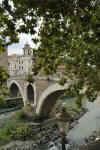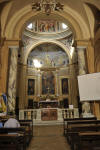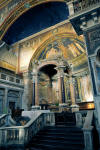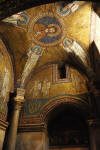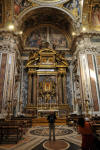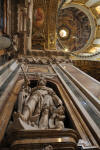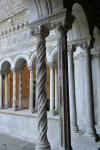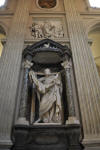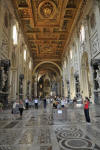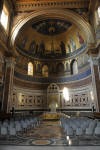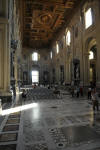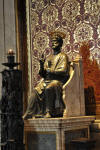Christian Rome
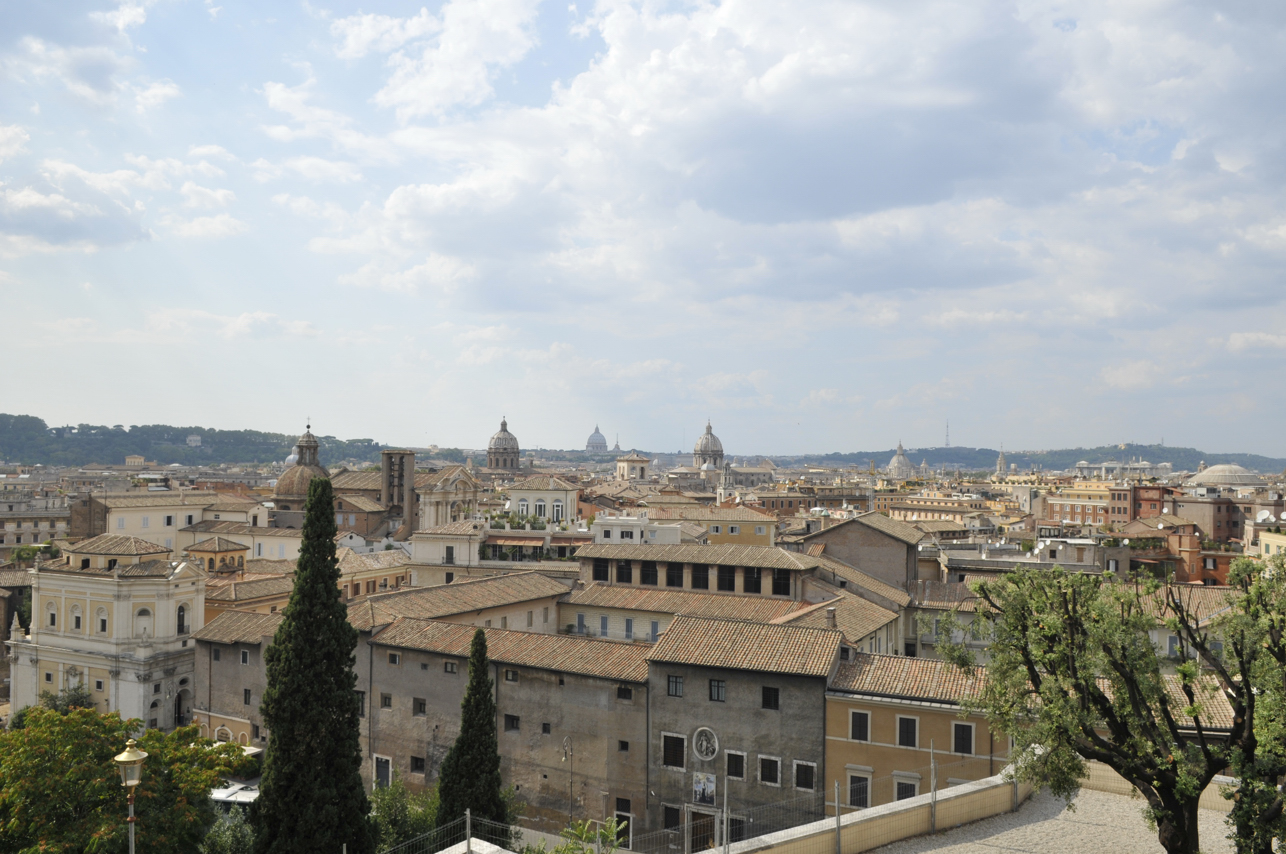
I had an opportunity to visit Rome briefly in September, 2009. My main focus was Imperial Roman art and architecture to fill a gap in a growing set of images I have assembled travelling in areas once part of the Roman Empire in Europe, Africa and Asia. Nevertheless, Rome today is a distinctly Christian city by design, and the architectural evidence of this is apparent everywhere and inescapably. Because I was on my way to Sicily to photograph examples of Arab Norman art and architecture of the 12th century famous especially for the remarkable mosaic work done by Byzantine artisans who came from Constantinople, I thought it would be useful to try to get some images of early Christian mosaic work in Rome for comparative study. I hope to return to the eternal city sometime soon to pass a more leisurely moment, but during these few days I did have a chance to visit and photograph a few important Christian buildings.
|
Early Churches and Mosaics
Santa Pudenziana
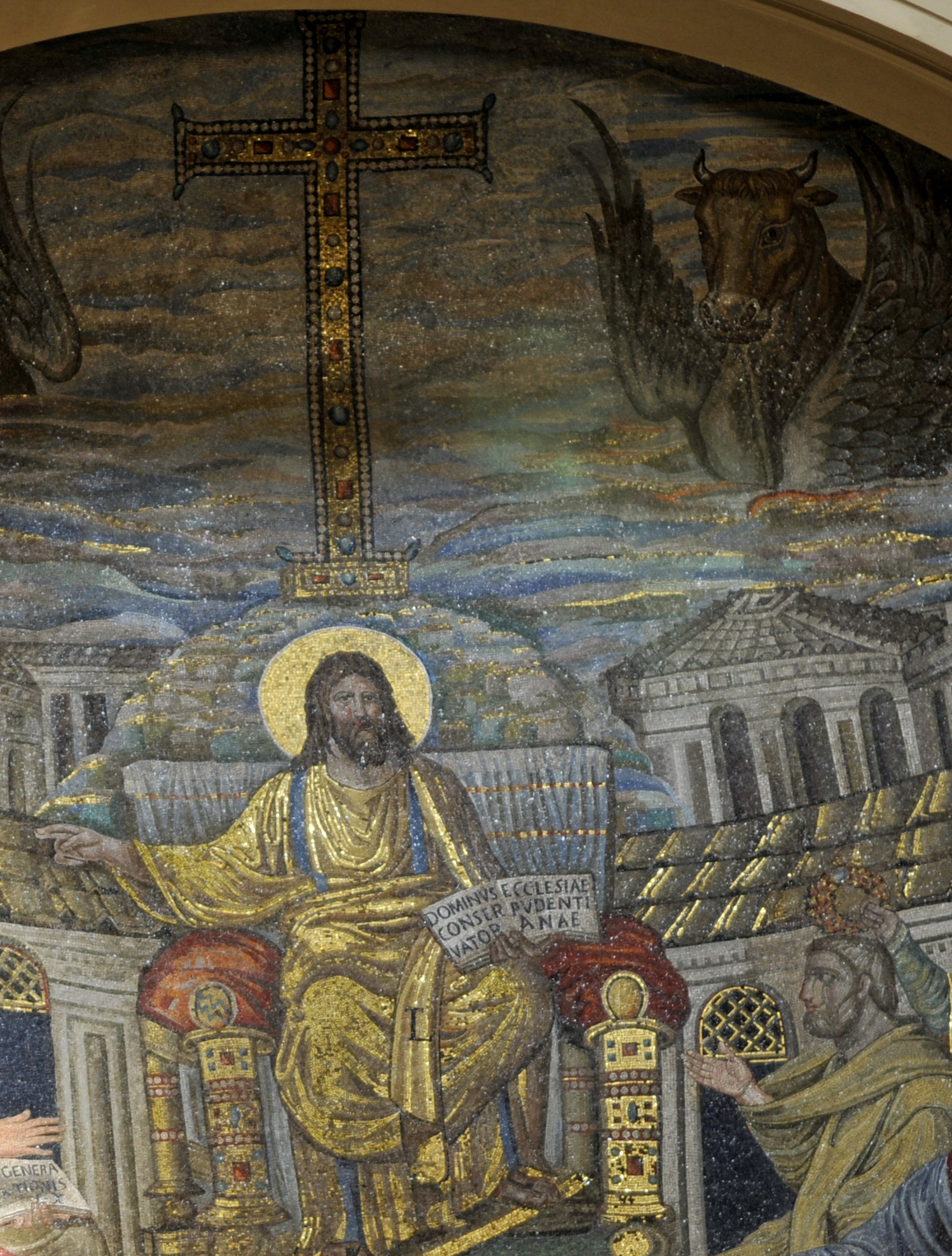
This is one of the first parish churches of Rome, known as Titulus Pudentiana, for the daughter of the Roman Senator St. Pudens, who was, according to pious tradition, the first convert in Rome of St. Paul. The first church established here may have been as early as the time of Pius I (140-155). The house of St. Pudens was used as a "house church" in the time after the deaths of Saints Peter and Paul. Later, after the practice of Christianity was legally authorized, a more formal church was constructed on the site in the time of Pope Siricius (384-399). The mosaic we see today dates from circa 390, except for a portion of the lower right that was restored in 1588 by Francesco da Volterra at the direction of Cardinal Enrico Caetani. The original portion of the mosaic is the oldest church mosaic in the world. Furthermore, it is also among the earliest examples of the use of the symbols of the evangelists, the angel, lion, ox, and eagle. This is also one of the earliest known examples of Christ being represented in human form rather than by an abstract symbol, although such a symbol is also present in the large cross seen directly above the Christ figure. The female figures placing crown on the heads of Saints Peter and Paul are said by some to be representations of Saints Pudenziana and her sister Prassede, others argue that they represent the Gentile and Jewish communities. Based on the study made by an archaeology intern working at the church in 2007, it is believed that the background images of buildings accurately reflect the buildings on the street at the time the mosaic was made.
The bell tower is 13th century or perhaps earlier, the 1588 oval dome designed by Francesco da Volterra, was painted by Pomerancio with a fresco depicting Angels and Saints before the Savior .
Santa Prassede
This church was commissioned by Pope Hadrian I in about 780. Later Pope Paschal I (817-824), a participant in the "Carolingian Renaissance," became interested in recovering the bones of early saints from the catacombs of Rome. He transferred various relics to this church and had it enlarged in 822. The elaborate mosaic program was part of Paschal's addition to the church. In the apse the main mosaic is a representation of Saint Prassede Gathering the Blood of the Martyrs. Jesus is seen in the center with Saints Peter and Paul on his sides, presenting the sisters, Saints Pudenziana and Prassede, to God while Paschal, the patron, is seen on the far left with the square halo of the living, presenting a model of a church to God. On either side of the great arch twelve men hold wreaths of victory and welcome the souls into heaven, above them the symbols of the four Gospel writers, the angel, the lion, the ox, and the eagle for Mathew, Mark, Luke, and John. At the center of the arch is the enthroned lamb, symbol of Christ's return to Earth. Off the nave is the St. Zeno chapel, decorated in mosaic, built by Paschal as a funerary chapel for his mother.
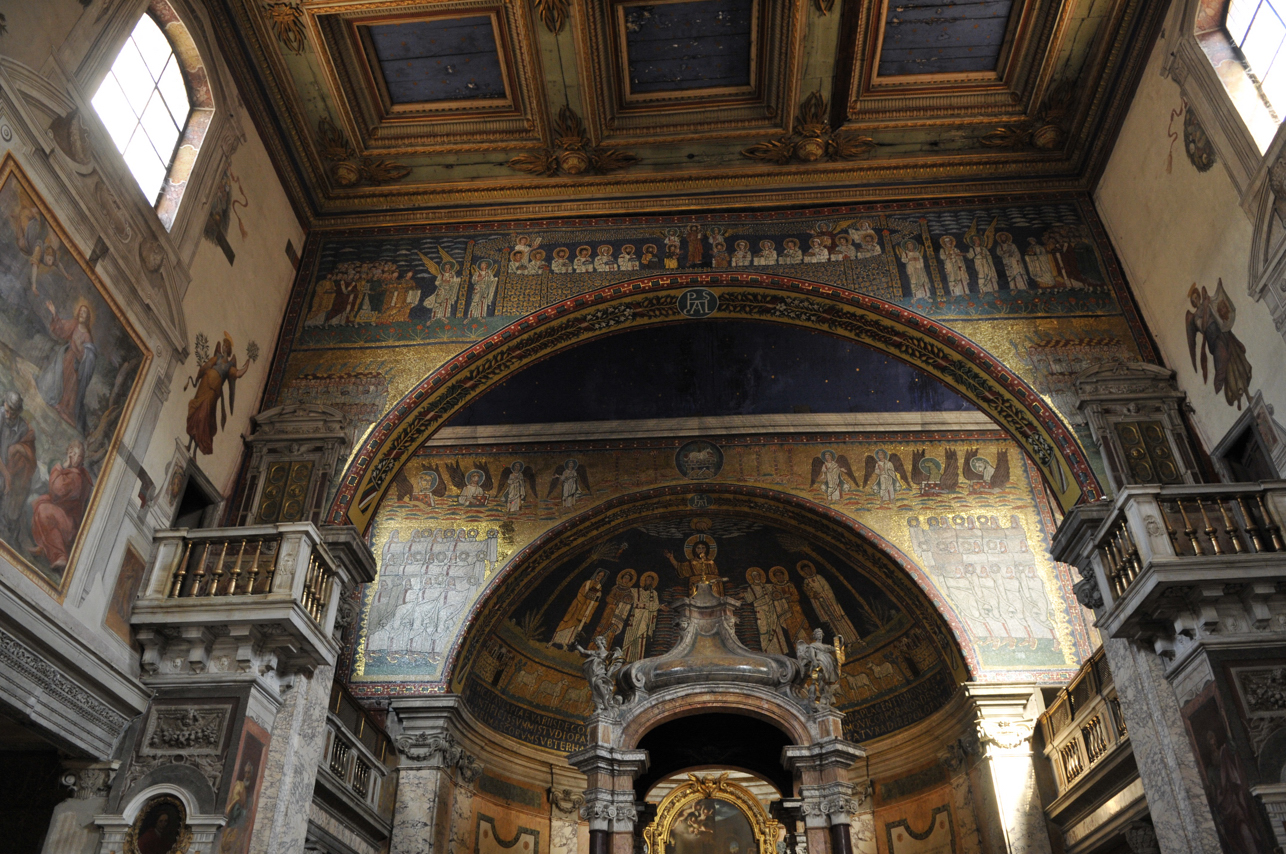
Santa Maria Maggiore
Although encased in later additions, the core of this Papal Basilica dates to the time of Pope Sixtus III (432-440). Many of the mosaics inside depicting Old Testament themes date from this period, and together are the oldest example of the use of mosaic in an iconographic cycle in existence. Following the destruction of the city during the Sack of Rome carried out by Alaric in 410 there was a need to reestablish legitimacy, and in the ensuing vacuum the papacy under Sixtus took a leading role and used Architecture as the visible instrument of his establishment in authority. The form of the ancient portion of the church closely resembles an imperial basilica. Certainly the 36 Athenian marble columns in the nave pre-date the time of Sixtus III. They may have originally been part of an ancient imperial building. The bell tower, the highest in Rome at 240 feet, is from the 14th century. the 16th century coffered ceiling designed by Giuliano da Sangallo is said to be gilded with gold from the New World. The Apse mosaic, The Coronation of the Virgin, is from 1295, signed by the Franciscan friar Jacopo Torriti. The Marian Column erected in 1614 as designed by Carlo Maderno is the only surviving column from Constantine's Basilica of Maxentius and Constantine in the Roman Forum.
The present facade dates from 1740 when Pope Benedict XIV engaged Ferdinando Fuga to make renovations. The interior and all of the altars were remodeled between 1575 and 1630.
In the Borghese, or Pauline Chapel, over the main altar is the famous icon Saulus Populi Romani, or Health of the Roman People, from a miracle attributed to the relic in keeping the plague from the city. The icon is at least 1,000 years old, but according to pious tradition, it was painted by Saint Luke. It is said that radiocarbon dating establishes the age of the relic as approximately 2,000 years old. This icon has been much venerated by several popes. It is believed to be the oldest Marian image in Rome.
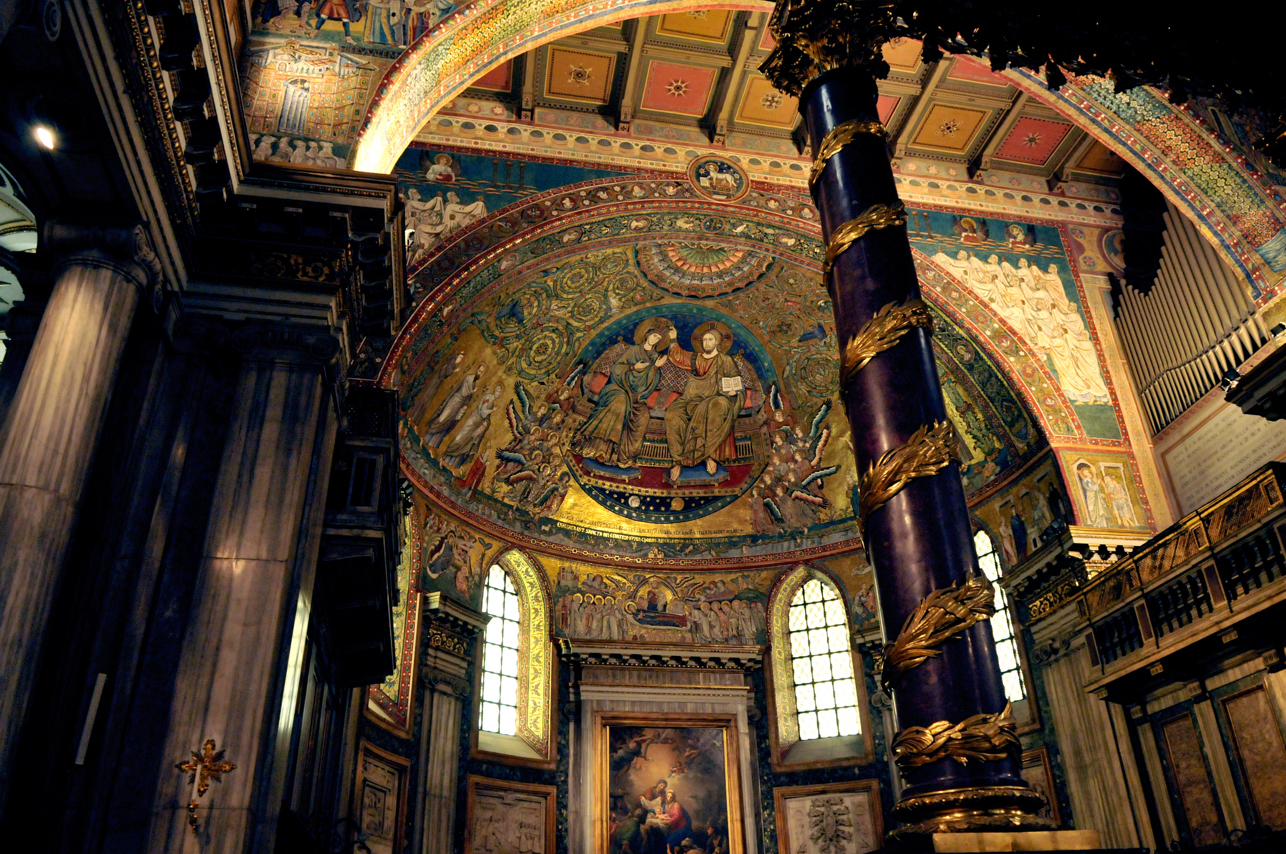
Above the marble architrave, seen in the images below, is a long series of early, mid 5th century, mosaic panels from the time of Pope Sixtus III, depicting scenes from the Old Testament, on the left side scenes from Genesis, on the other from Exodus, Numbers and Joshua, more or less in chronological order.


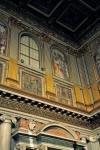 These panels on the right side, facing the apse, depict David leading the Arc
into Jerusalem and Solomon's Temple
These panels on the right side, facing the apse, depict David leading the Arc
into Jerusalem and Solomon's Temple
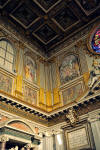 Here the panels are Solomon's Temple on the left, and The Division of the
Kingdom on the right, over the door.
Here the panels are Solomon's Temple on the left, and The Division of the
Kingdom on the right, over the door.
 Here, from right to left, Solomon's Temple, David Leads the Arc into Jerusalem,
The Punishment of the Amorite Kings, The Sun Stands Still for Joshua, Joshua and
the Defeat of the Amorites
Here, from right to left, Solomon's Temple, David Leads the Arc into Jerusalem,
The Punishment of the Amorite Kings, The Sun Stands Still for Joshua, Joshua and
the Defeat of the Amorites
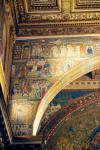
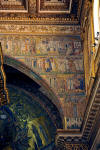 Considered to be the best preserved group of late antique pictorial narratives,
the 5th century mosaics on the triumphal arch at the apse, commissioned by Sixtus
III, are arranged in horizontal registers depicting scenes from Christ's early
life, . On the left at the bottom a depiction of Jerusalem, above that the
Massacre of the Innocents, above that the Adoration of the Magi, showing
ceremonial elements derived from Imperial practice, including the enthroned
Christ. Also present are scenes of the Annunciation, Presentation in the Temple,
Flight to Egypt, the Welcoming of the Holy Family by Aphrodisiis at Sotinen in
Egypt, and also a depiction of the village of Bethlehem.
Considered to be the best preserved group of late antique pictorial narratives,
the 5th century mosaics on the triumphal arch at the apse, commissioned by Sixtus
III, are arranged in horizontal registers depicting scenes from Christ's early
life, . On the left at the bottom a depiction of Jerusalem, above that the
Massacre of the Innocents, above that the Adoration of the Magi, showing
ceremonial elements derived from Imperial practice, including the enthroned
Christ. Also present are scenes of the Annunciation, Presentation in the Temple,
Flight to Egypt, the Welcoming of the Holy Family by Aphrodisiis at Sotinen in
Egypt, and also a depiction of the village of Bethlehem.
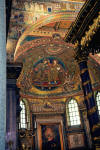
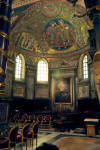
 The
Coronation of the Virgin, is from 1295, signed by the Franciscan friar Jacopo Torriti.
The
Coronation of the Virgin, is from 1295, signed by the Franciscan friar Jacopo Torriti.
 In the Confessio, designed by Virgilio Vespasian in 1864, a kneeling statue of
Pope Pius IX by Ignazio Jacometti, 1880.
In the Confessio, designed by Virgilio Vespasian in 1864, a kneeling statue of
Pope Pius IX by Ignazio Jacometti, 1880.
The Borghese Chapel, or Capella Paolina, was designed by Flamino Ponzio and constructed between 1603 and 1611. The richness of the materials used is extraordinary and truly stunning, even in a city where lavish use of rare marble and precious stone is the norm. The dome was painted by Cigoli and depicts Paradise. Other artists, including Guido Reni, Lanfranco, Giovani Baglione and the Cavalier d'Arpino also worked on the fresco cycles in the chapel.

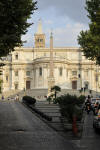 The front facade was designed in 1743 by Ferdinando Fuga . The exterior of the
Apse was designed by Bernini, and undertaken by Carlo Rainaldi in 1673.
The front facade was designed in 1743 by Ferdinando Fuga . The exterior of the
Apse was designed by Bernini, and undertaken by Carlo Rainaldi in 1673.
 The Marian Column erected in 1614 as designed by Carlo Maderno is the only surviving column from Constantine's
Basilica of Maxentius and Constantine in the Roman Forum.
The Marian Column erected in 1614 as designed by Carlo Maderno is the only surviving column from Constantine's
Basilica of Maxentius and Constantine in the Roman Forum.
San Giovanni in Laterano
This church is the official ecclesiastical seat of the Bishop of Rome, who is the Pope. It is known officially as the Archbasilica of the Most Holy Savior and Sts. John the Baptist and the Evangelist at the Lateran. It is the Cathedral of Rome and is the oldest and first ranking of the four major basilicas of Rome, making it the ecumenical mother church. The site was given to the Church by the Emperor Constantine about 313. For a thousand years it served as the seat and residence of the popes until 1309 when Clement V moved the official seat of the Catholic Church to Avignan, a papal enclave in France. Two great fires, in 1307 and 1361 diminished the grandeur of the church and palace. So it remained until the time of Pope Sixtus V who brought Domenico Fontana to undertake the project of rehabilitation. As part of the project the great granite obelisk erected by Thutmose III in Karnak, the largest in the world, brought to Rome by Constantius II in 357, was erected in the plaza in front of the church in 1587. Work on the interior of the church continued under Francesco Boromini at the direction of Pope Innocent X. Not until 1718 were the Borromini's twelve niches filled with statues of the apostles by the greatest Roman sculptors of the age.
The cloister is a survival from the 13th century.
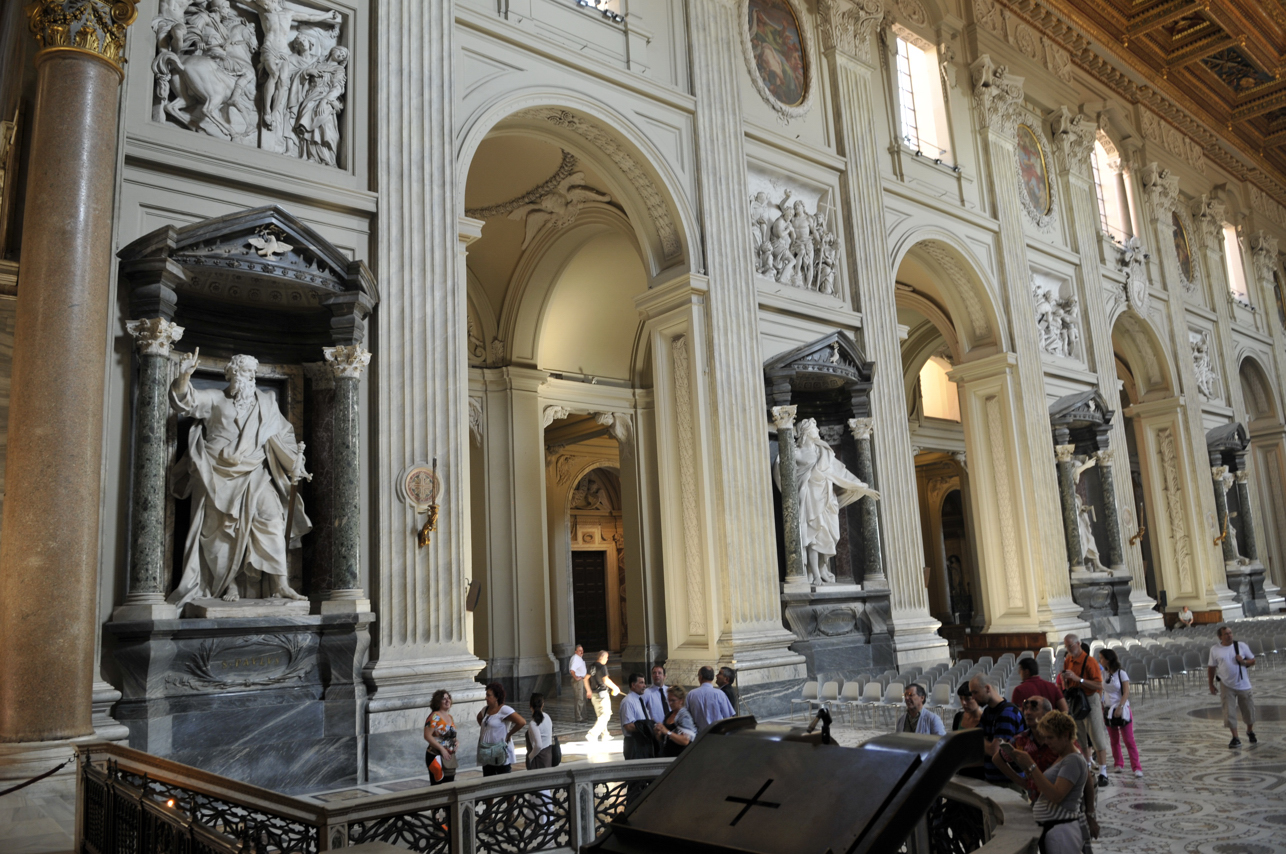
Saint Peter's Basilica
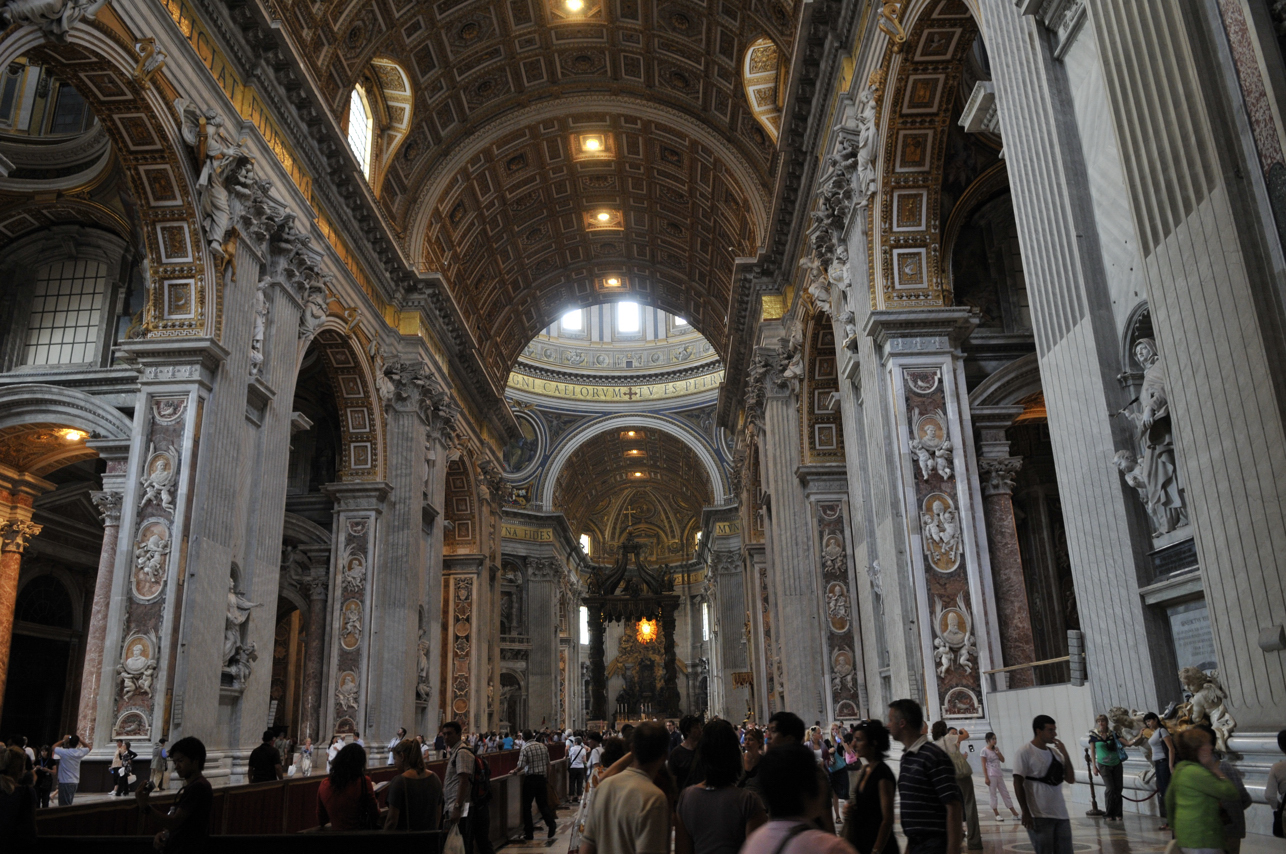
Other Churches

Santa Maria di Loreto on the left and Santissimo Nome de Maria al Foro Traiano 1741, Antoine Derizet
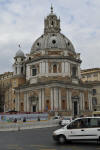 Santa Maria di Loreto, 1507, Antonio da Sangallo the younger, lantern by Jacopo
del Duca 1581
Santa Maria di Loreto, 1507, Antonio da Sangallo the younger, lantern by Jacopo
del Duca 1581
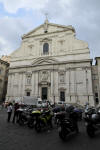 Il Gesu, 1580, Giacomo Barozzi da Vignola and Giacomo della Porta (facade)
Il Gesu, 1580, Giacomo Barozzi da Vignola and Giacomo della Porta (facade)

 San Nicola in Carcere, 10th century, facade 1599 Giacomo della Porta.
Constructed on the ruins of the Forum Holitorium, incorporating three columns
from the Temple of Juno Sospita.
San Nicola in Carcere, 10th century, facade 1599 Giacomo della Porta.
Constructed on the ruins of the Forum Holitorium, incorporating three columns
from the Temple of Juno Sospita.
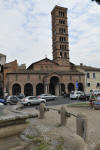 Santa Maria in Cosmedin, 6th century, substantially remodeled in 1118-24,
restoration in 1894-99 removed a 1718 Baroque facade by Sardi.
Santa Maria in Cosmedin, 6th century, substantially remodeled in 1118-24,
restoration in 1894-99 removed a 1718 Baroque facade by Sardi.
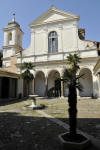
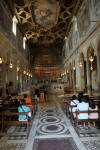 San Clemente, ca. 1100 over a 4th century church, 12th century mosaics in an
earlier style, building restored under Pope Clement XI by Carlo Fontana
San Clemente, ca. 1100 over a 4th century church, 12th century mosaics in an
earlier style, building restored under Pope Clement XI by Carlo Fontana
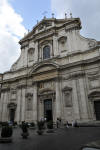 Sant'Ignacio, designed by Orazio Grassi, construction began in 1626,
consecration in 1722.
Sant'Ignacio, designed by Orazio Grassi, construction began in 1626,
consecration in 1722.


